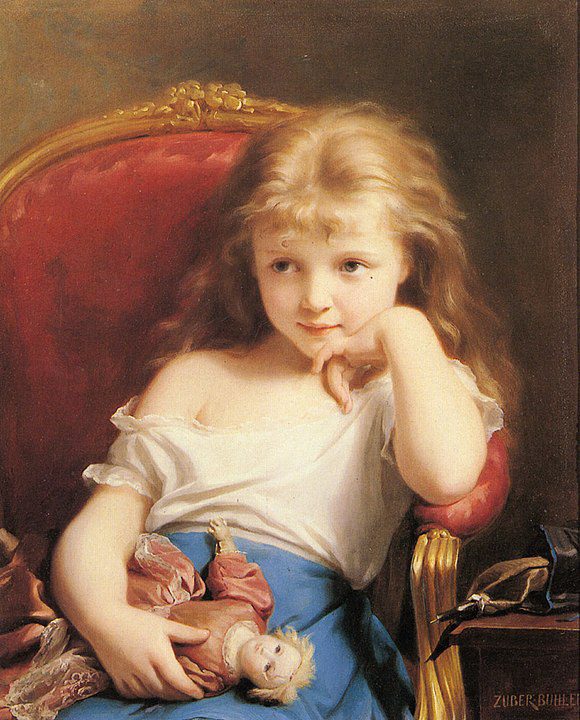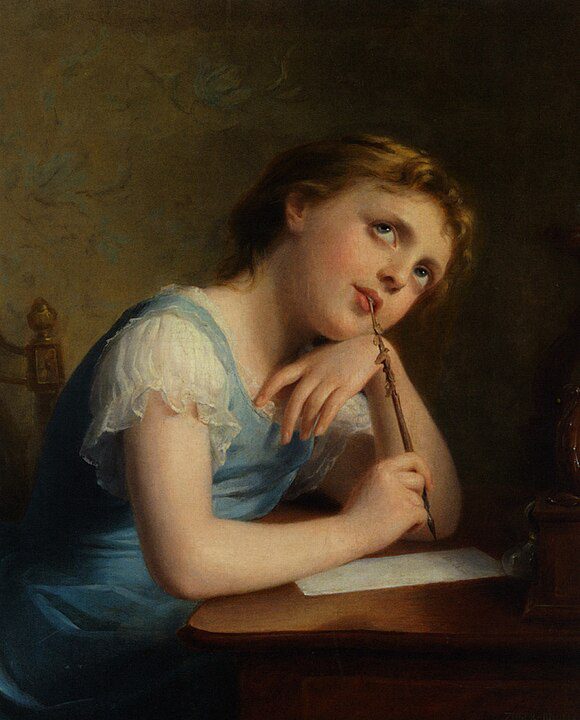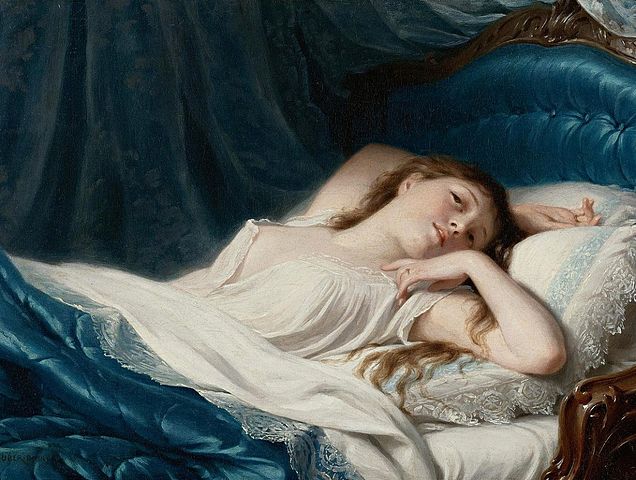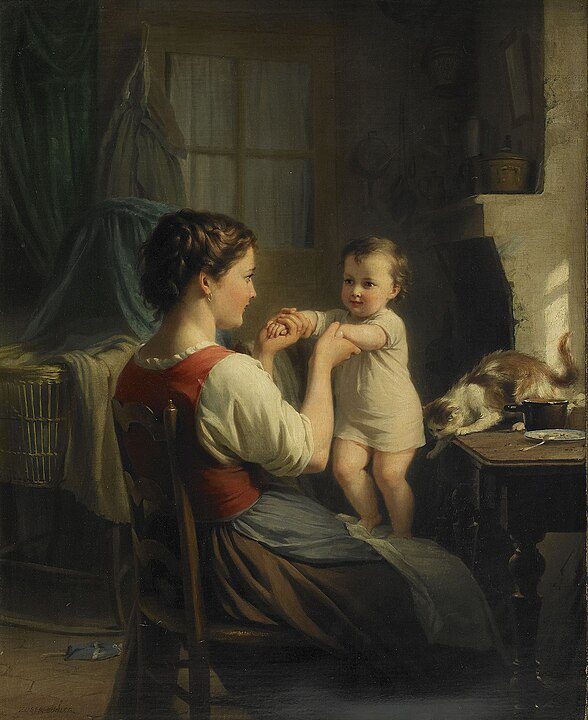
Fritz Zuber-Bühler, a Swiss academic painter known for his enchanting depictions of young women and children, was born on June 15, 1822, in Le Locle, Switzerland. Zuber-Bühler’s artistic career unfolded during the 19th century, a period characterized by academic traditions and the emergence of various artistic movements. His works, often portraying idealized scenes of domesticity and innocence, gained popularity for their technical skill and sentimental charm.
Zuber-Bühler received his early artistic training in Geneva and later studied at the Academy of Fine Arts in Munich, where he honed his skills in academic painting. He became associated with the Munich School, a group of artists who embraced academic principles and techniques while incorporating elements of Romanticism.

The artist’s subject matter primarily focused on the portrayal of young women and children engaged in idyllic and sentimental scenes. Zuber-Bühler’s paintings often featured charming domestic settings, capturing the innocence and beauty of childhood. His attention to detail, refined brushwork, and delicate color palette contributed to the enchanting quality of his works.
Fancy Girls
One of Zuber-Bühler’s recurring themes was the depiction of young girls adorned in elegant dresses, often surrounded by flowers or engaged in pastoral activities. Paintings like “The Flower Girl” (1872) and “Feeding the Doves” (1890) exemplify his penchant for creating picturesque and emotionally resonant scenes.

Zuber-Bühler’s artistic style aligns with academic traditions, emphasizing realism and technical precision. His ability to render fabrics, textures, and the play of light on surfaces showcased his mastery of the academic approach. While his subjects were often idealized, the artist’s skill in capturing naturalistic details added a sense of authenticity to his portrayals.
The artist’s popularity extended beyond Switzerland, and his works gained recognition in European art circles. Zuber-Bühler exhibited at major salons in Paris and Munich, where his paintings were well-received by both critics and collectors. His success in the art market allowed him to maintain a prolific career as a painter.
non Avant-garde
Despite the evolving art movements of his time, Zuber-Bühler remained dedicated to academic principles throughout his career. While his works may not have aligned with the avant-garde movements of the late 19th century, they found a receptive audience among those who appreciated the nostalgic and sentimental qualities of his art.

Fritz Zuber-Bühler passed away on July 23, 1896, leaving behind a legacy of enchanting and idealized depictions of childhood and femininity. His paintings continue to be admired for their technical proficiency, sentimental charm, and the timeless allure of the idyllic worlds he created. While not a revolutionary force in the art world, Zuber-Bühler’s contribution to the genre of academic painting remains appreciated for its enduring appeal and the glimpse it provides into the sentimental aesthetics of the 19th century.




